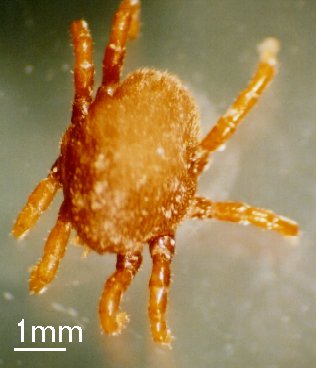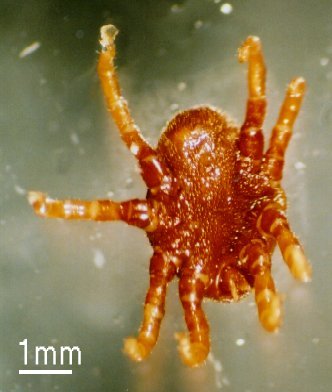Argasidae,
Soft ticks
5
genera are known worldwide: Argas, Ornithodorus, Otobius, Antricola
and Nothoaspis
Of which 3 species are found in Europe, namely: Argas
reflexus (pigeon tick), Argas vespertilionis
and Ornithodorus maritimus.
This page is a dead end, to continue key go back to Family
page
| Full
description of family: |
|
|
|
- Their
legs are unarmed and have no or little pulvilli.
|
Ornithodorus
moubata
 
|
| Background
information: |
| |
| Argasidae
ticks are mainly found in sheltered environments (in nests,
burrows, caves...) and are nidicolous,
in other words they inhabit the hosts nest.
Unlike hard ticks, the life cycle can have 11 stages, as nymphal
stages are constituted of 2 to 8 cycles. Soft ticks are long-lived
(5-10 blood meals), feed rapidly (adults and nymphs) off one
host species (99% of the time). Whilst feeding they do not
inject cement and the females only expand 12 times their initial
size. Mating occurs off the host, although females do not
need mating to engorge and can lay 200-300 eggs. |
|

